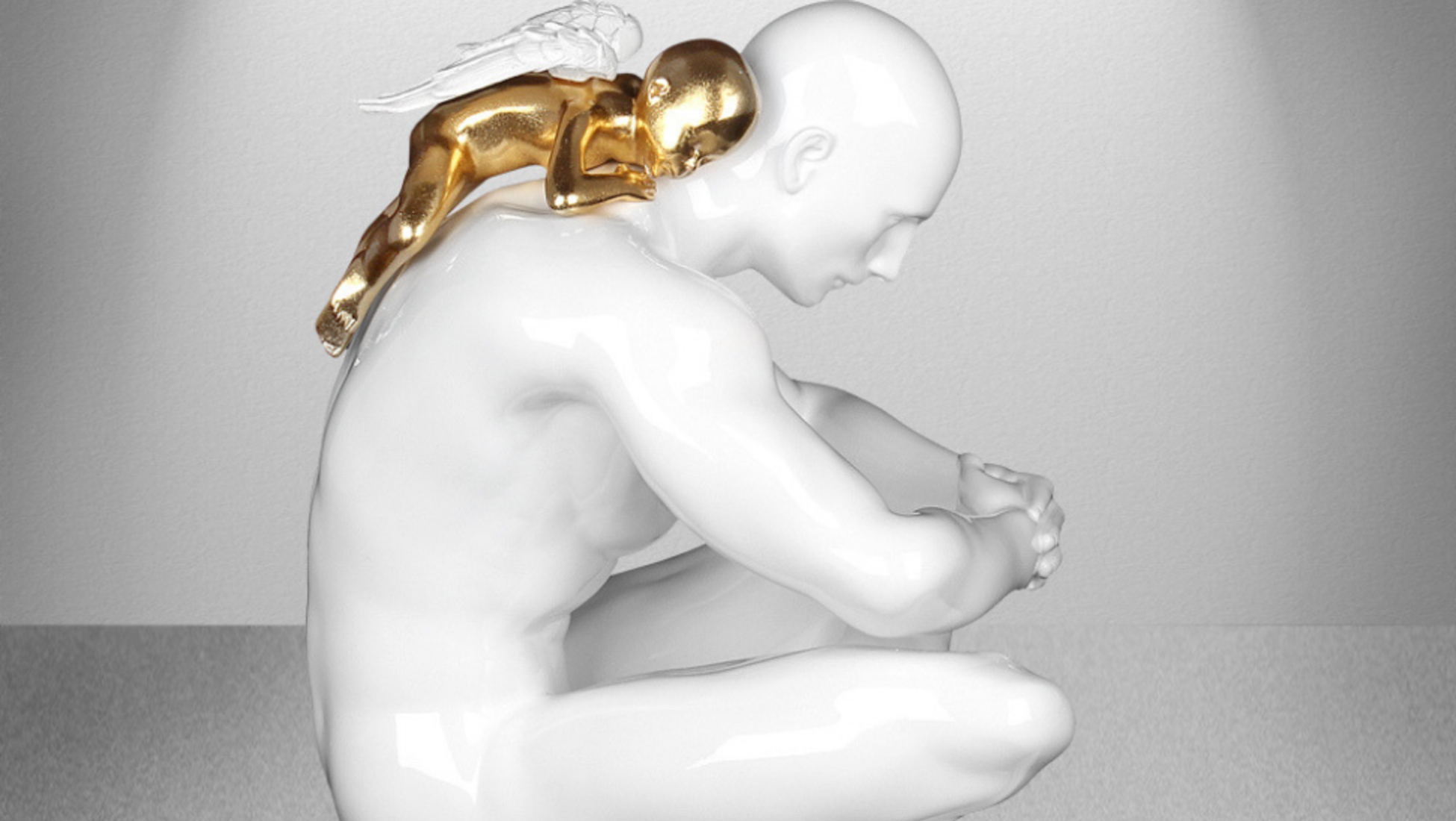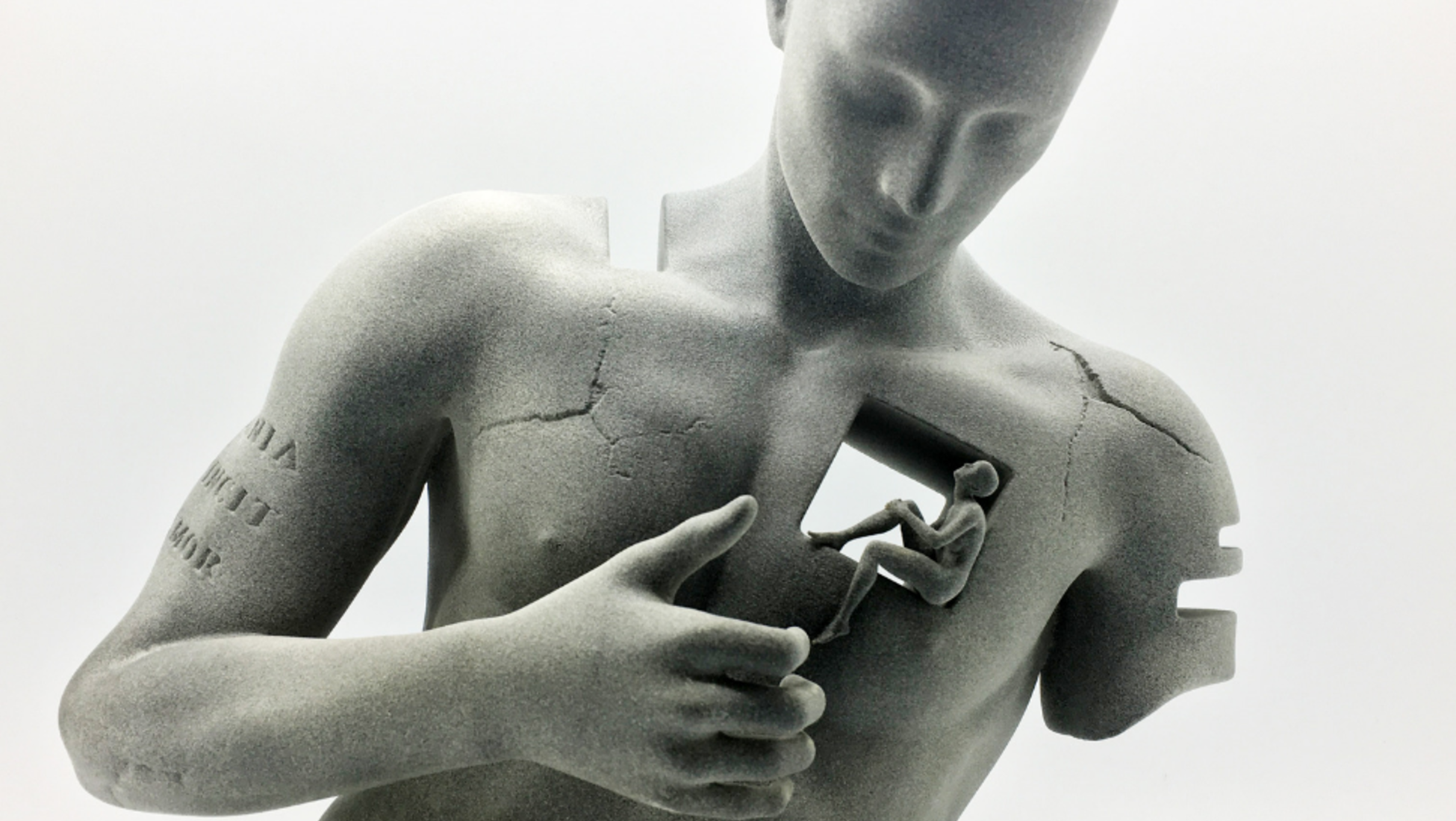Written by Tom | 22nd October 2019
Andrea Giorgi is an Italian artist who had always admired the great sculptors of the world – Michelangelo, Bernini, Igore Mitoraj. In order to promote his own sculptures, he decided selling online was the only way to break into the art world. But digital has been more than just a marketplace and medium for him – it’s become a way to produce art and a way to define his. In his digital sculptures, he explores the rawness of what it means to be human. We caught up with him to hear more about what it means to be an artist in a digital world.
Hi Andrea, thanks for sitting down with us. Could you tell us a bit about the kind of art you produce and your work process?
Andrea: Like many artists, inspiration normally comes during the saddest or happiest moments of my life. I can have two or three ideas in a few days and only one idea in six months. The image is raw and almost instantaneous in my mind, then I feel the need to transform it into an existing sculpture.
This process is not simple and it can take weeks, months or years. It's not easy to reproduce the emotion I have in mind into a static sculpture; especially when trying to convey an emotion that is difficult to represent, such as melancholy.
Not everything is always feasible either. Even though new technologies are constantly improving, production costs are often still too high for a small-series production. I use a mix of four, sometimes five, different 3D computer programs to turn an idea into reality. I'm very interested in experimentation and I'm always looking for new 3D printing technologies and production/finishing materials.

The baby angel sculpture
You focus a lot on the naked human form, why is this?
Andrea: My style is simple contemporary and classic. In words, they seem to be two different and contrasting styles but in my art they coexist. I don’t think there’s anything more beautiful and expressive than a naked human body. Naked we are all the same and vulnerable. By looking at a naked person, we can capture their feelings and emotions.
On that note, there's definitely a palpable sense of emotion across your digital sculptures – do you feel there's an urgent need to represent raw human emotion when the digital world is arguably reducing our capacity to do so and bombarding us with hyper-stylised images?
Andrea: Today we live in a world where, unfortunately, appearance is everything. In the era of consumerism we are what we buy. When we see a person we "catalog" them based on their clothes, their car, their house, to their work. We hide behind material things.
I strip my sculptures of all this in order to return to an archaic dimension. I also avoid characterising faces with facial expressions. The faces of my sculptures are never smiling or sad, they are always neutral. It's the only pose that transmits the emotion I want to represent.

There are lessons of the heart to be found in Giorgi's work
In many ways, a lot of your art is very stripped back in its presentation and what it tries to convey. How have people responded to this?
Andrea: I believe that for a message to be understood by many people, it should be simple and immediate. The "canvas cuts" of Lucio Fontana have revolutionised and improved the art world, but if you don't explain it to people, it just remains cut canvas to them, another meaningless picture.
There are a few people who ask me for explanations about the meaning of my sculptures, and it usually happens with sculptures that I have created in a more complex way, as that theme can have a different meaning depending on a person’s life experience (eg. the construction of love). People tell me that they recognise themselves in the sculptures because every man without clothes and without hair can look like a sculpture of mine.
There are two ways to convey emotions; the first is to create something aesthetically pleasing and balanced, the second is to remind the person of something in their life. This is what I try to do with my art.
____________________
Find yourself in some of Andrea Giorgi’s work on Catawiki and explore our selection of contemporary art.
Discover more Art | Modern & Contemporary Art
You might also like:
The eco-futuristic photography of Steve Sabella
How the S.M.S. portfolios helped make art more accessible
What’s next for the Modern Art market?



















































































